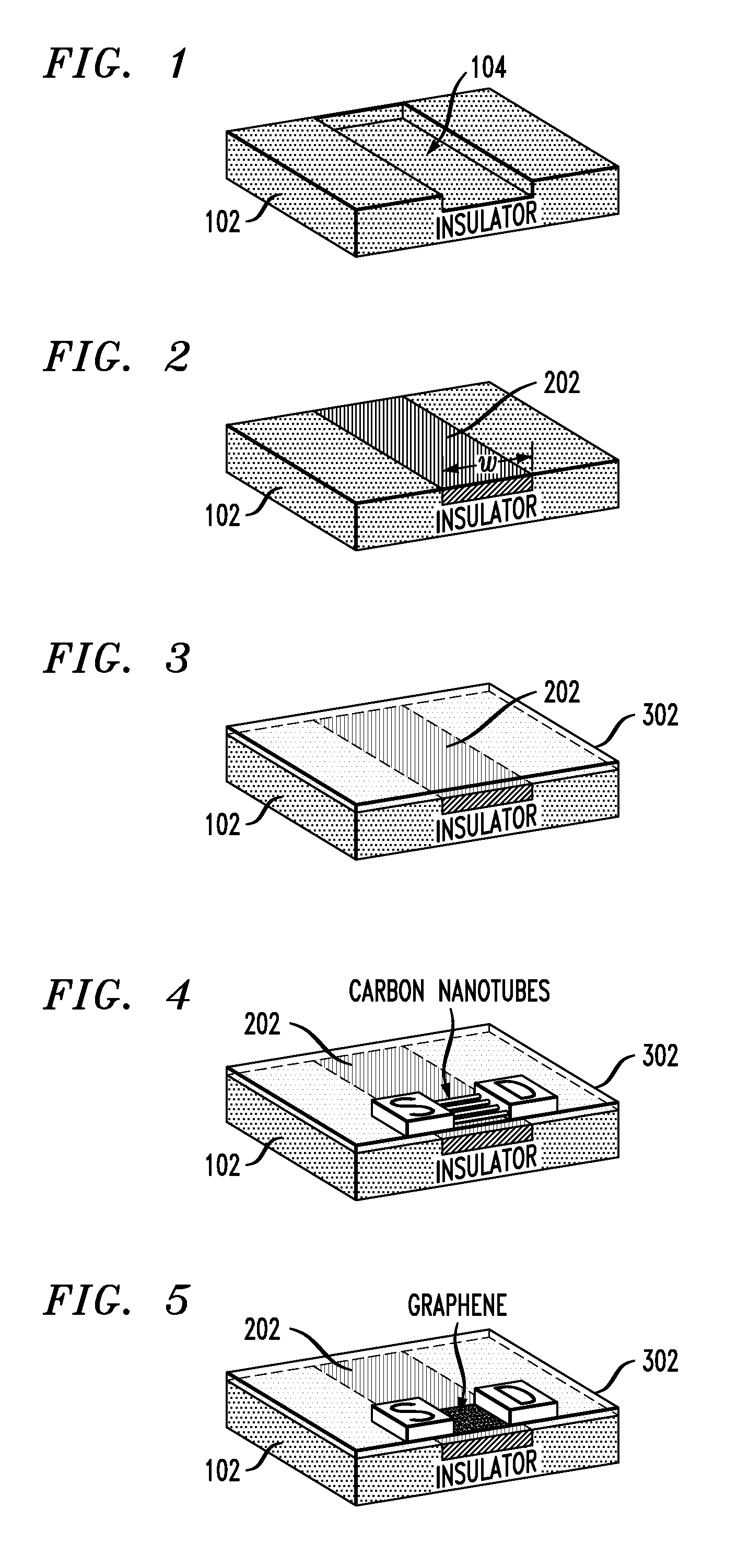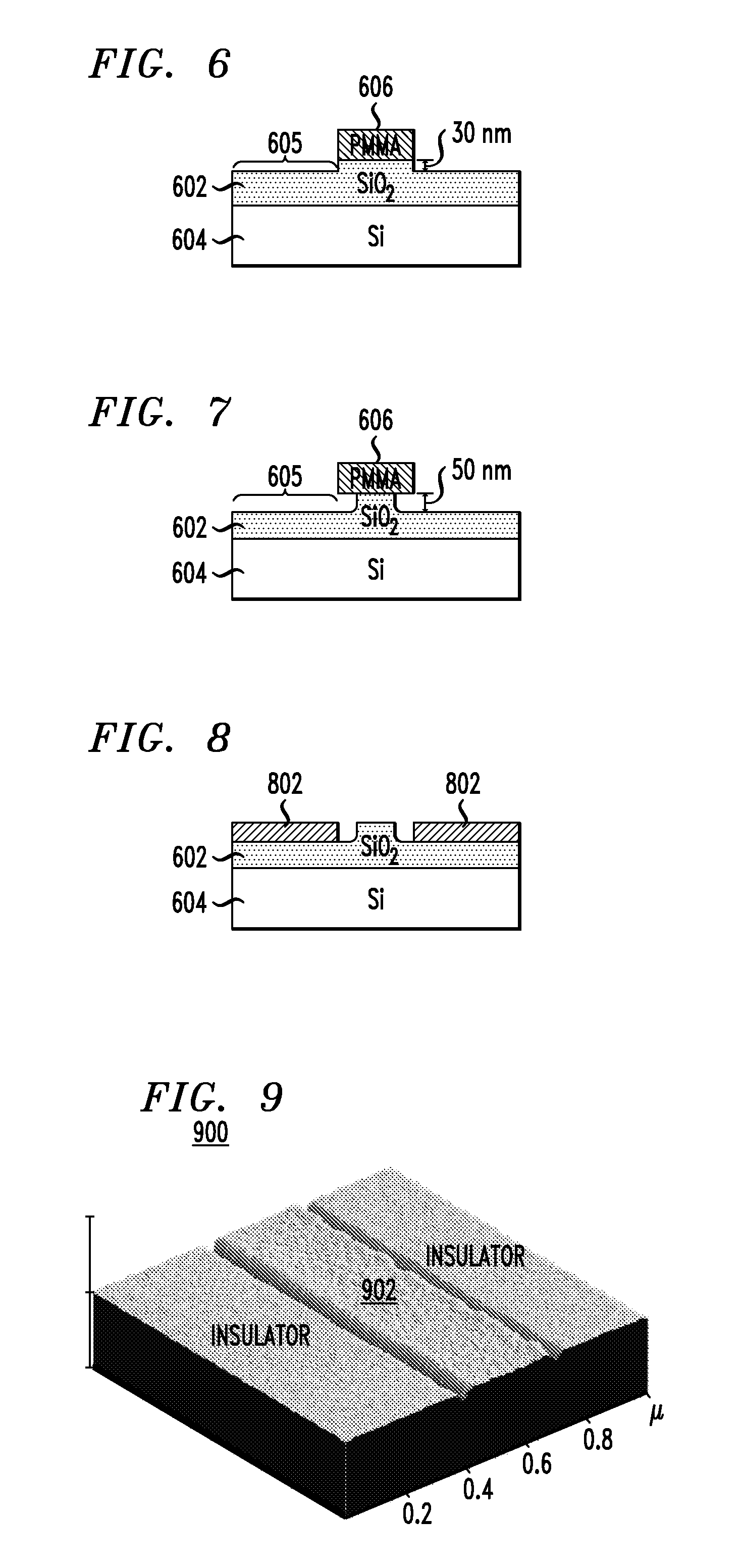Local bottom gates for graphene and carbon nanotube devices
a carbon nanotube and graphene technology, applied in the direction of nanotechnology, semiconductor devices, electrical equipment, etc., can solve the problems of scaling either of these nanomaterials, difficult to establish thin, uniform and high-quality dielectrics on their surfaces, and nearly impossible to nucleate or deposit insulators
- Summary
- Abstract
- Description
- Claims
- Application Information
AI Technical Summary
Problems solved by technology
Method used
Image
Examples
Embodiment Construction
[0022]FIGS. 1-5 are diagrams illustrating an exemplary methodology for fabricating a transistor device having a channel formed from a nanoscale material, such as carbon nanotubes or graphene. In general, a transistor includes a source and a drain connected by a channel(s), and a gate which regulates electron flow through the channel. The gate is separated from the channel by a dielectric material (a gate dielectric). As will be described in detail below, the present process flow involves forming a local bottom gate and ultra-thin gate dielectric prior to placing the channel over the dielectric, which avoids altogether the above-described problems associated with trying to form the dielectric on the carbon nanotube / graphene material (in this manner, the dielectric thickness and uniformity are entirely independent of the channel material used allowing the device to be scaled aggressively). To do so, the gate needs to be flush with a surrounding insulator, allowing for the channel mate...
PUM
| Property | Measurement | Unit |
|---|---|---|
| thickness | aaaaa | aaaaa |
| diameter | aaaaa | aaaaa |
| thickness | aaaaa | aaaaa |
Abstract
Description
Claims
Application Information
 Login to View More
Login to View More - R&D
- Intellectual Property
- Life Sciences
- Materials
- Tech Scout
- Unparalleled Data Quality
- Higher Quality Content
- 60% Fewer Hallucinations
Browse by: Latest US Patents, China's latest patents, Technical Efficacy Thesaurus, Application Domain, Technology Topic, Popular Technical Reports.
© 2025 PatSnap. All rights reserved.Legal|Privacy policy|Modern Slavery Act Transparency Statement|Sitemap|About US| Contact US: help@patsnap.com



